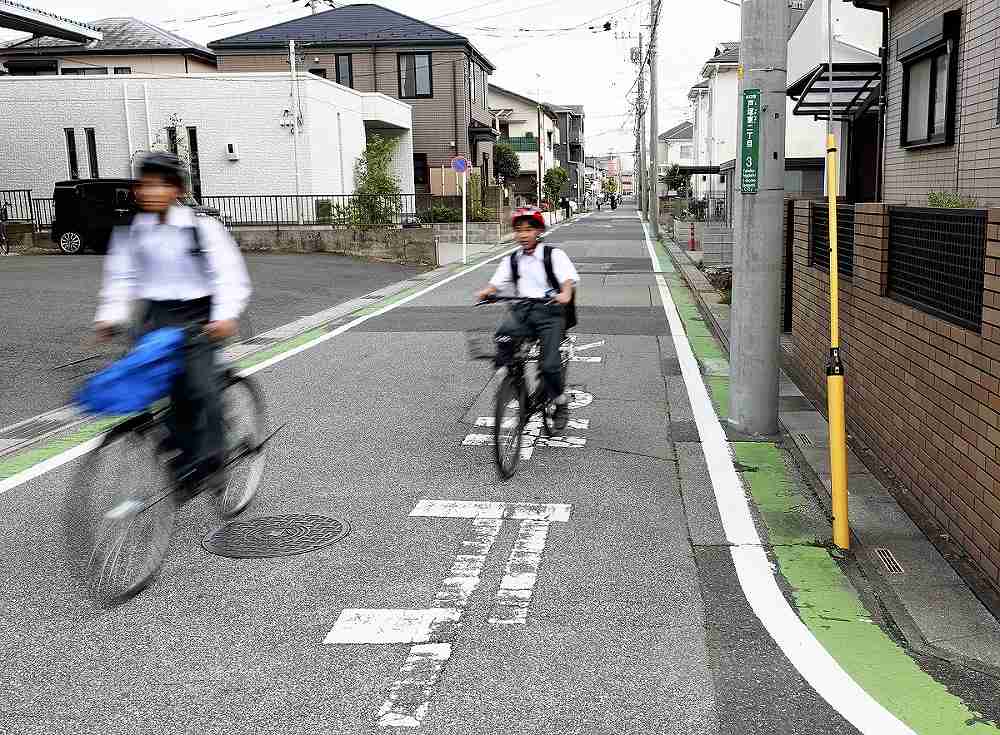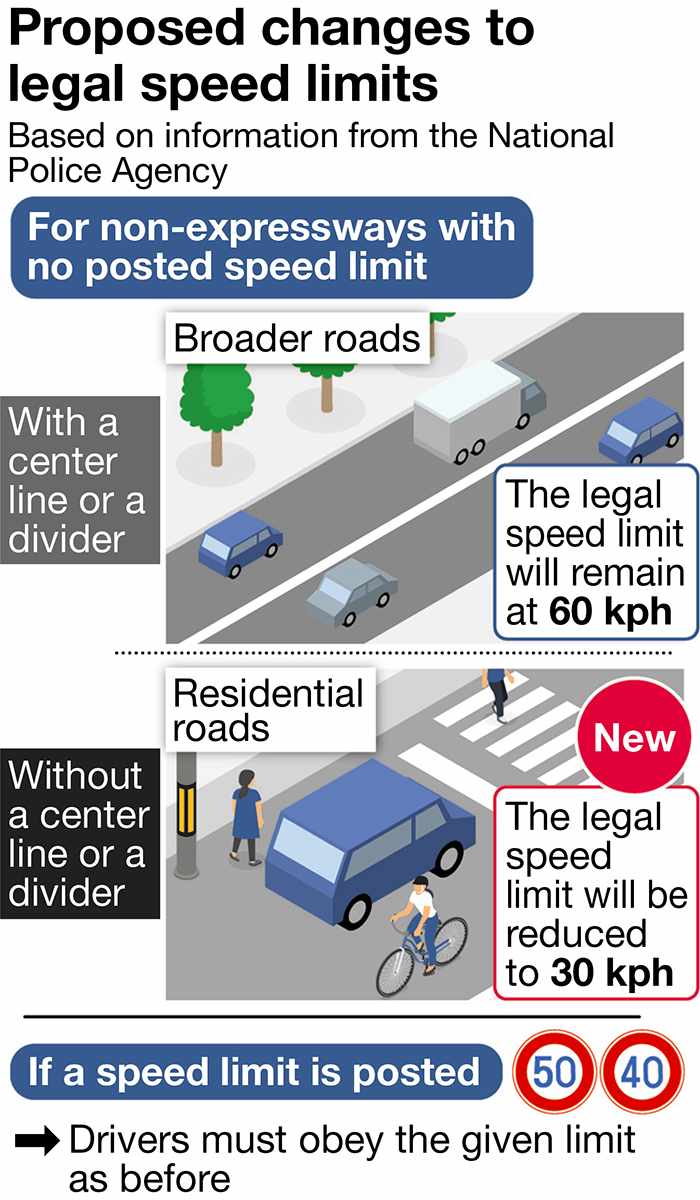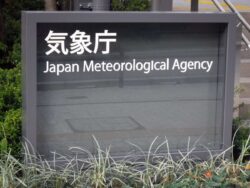Residential Road Speed Limit to Be Reduced to 30 kph in 2026; Move Is Supported by Families of Traffic Accident Victims

The site on a residential road in Kawaguchi, Saitama Prefecture, where four kindergartens were killed and 17 others were injured in an accident in September 2006.
12:01 JST, June 22, 2024
The legal speed limit for “residential roads” — defined as relatively narrow streets used mainly by the residents of a particular area — is expected to be reduced from the current 60 kph to 30 kph starting from September 2026 in hopes of lowering the risk of accidents involving pedestrians and cyclists.
Under the current ordinance of the Road Traffic Law, the legal speed limit for roads other than expressways defaults to 60 kph unless specified by posted sign or other means. On May 30, the National Police Agency released a draft revision to the ordinance which would lower the limit to 30 kph for roads which do not have a center line, a divider or poles in the middle.
The move has drawn praise from relatives of people killed in traffic accidents that occurred on such residential roads.
“The government has finally taken a step forward,” said Yoshiaki Fukuchi of Kawaguchi, Saitama Prefecture, whose daughter was killed in an accident in September 2006.
Yuzuki, then 5, was on a walk with other children at her nursery school and their teachers on a six-meter-wide road in the city when a car plowed into them just before 10 a.m. The vehicle was traveling at between 50 kph and 55 kph, and the driver was not paying attention. Of the 41 children and teachers, Yuzuki and three other children aged 3 to 5 were killed and 17 others were injured.
When Fukuchi later learned that the legal speed limit for the road was 60 kph, he found it difficult to believe: “Children use this road every day,” he said.
Following the accident, speed restrictions were imposed and safety measures were implemented for some residential roads in the city. The accident also prompted police nationwide to designate some roads around schools and residences as “zone 30s,” areas with a maximum speed limit of 30 kph.
Even so, Fukuchi has been frustrated because accidents have continued on residential roads, such as one in 2021 in Yachimata, Chiba Prefecture, in which two elementary school students were killed and three others injured when they were hit by a truck while walking home from school.
“I hope that everyone will drive at lower speeds as a matter of course so there are no more of these unreasonable accidents,” he said.
Under the NPA proposal, roads which are less than 5.5 meters wide are expected to be subject to a new legal speed limit of 30 kph. This would apply to about 70% of the nation’s non-expressway roads — or about 870,000 kilometers out of a total of 1.22 million kilometers.
Overall, traffic accidents are down, from 630,000 in 2013 to nearly half at 307,930 last year. Of the 2023 figure, however, about 24% occurred on roads less than 5.5 meters wide, almost unchanged from 10 years earlier.
According to a report compiled by the NPA in 2009, drivers are better able to react to unexpected, sudden events — such as someone running out in front of their car — if they are moving at 30 kph or slower. A car moving faster than 30 kph is significantly more likely to fatally injure a pedestrian or cyclist in the event of an accident.
One issue that the proposed revision would need to address is that the legal speed limit would be set at 60 kph for some roads and 30 kph for others. Furthermore, if a road already has a traffic sign showing a speed limit of, for example, 40 kph, drivers are required to obey that.
This means that drivers must judge which speed limit applies to the road they are driving on, depending on factors such as whether speed signs or center lines are present. It would be highly important to broadcast the new system to the public.
The NPA will promulgate the revised enforcement ordinance as early as late July, but bring it into effect two years later in order to secure enough time to ensure that the new changes are widely known.

Pedestrians at risk
The NPA’s move to lower the legal speed limit for narrower roads is supported by the fact that pedestrians in Japan are more likely to be involved in fatal accidents than those in Western countries.
The NPA has compared data from the other G7 member countries regarding the proportion of pedestrians among people who died within 30 days of being involved in traffic accidents. Japan’s figure stood at 37.1% in 2023, while the United States was 17.4% in 2021. The 2022 figures stood at 14.9% for France and 13.2% for Germany.
In European cities, it is the often case that sidewalks and driveways are clearly separated because urban roads were traditionally used by horse-drawn carriages. In Japan, by contrast, it is not common for roads to have separate spaces for pedestrians and vehicles, because roads were long used mostly by pedestrians before being taken over by cars in modern times.
"Society" POPULAR ARTICLE
-

M4.9 Earthquake Hits Tokyo, Neighboring Prefectures
-

Israeli Tourists Refused Accommodation at Hotel in Japan’s Nagano Pref., Prompting Protest by Israeli Embassy and Probe by Prefecture
-

M7.5 Earthquake Hits Northern Japan; Tsunami Waves Observed in Hokkaido, Aomori and Iwate Prefectures
-

Tsukiji Market Urges Tourists to Avoid Visiting in Year-End
-

High School in Kyoto Says Students Shoplifted during Recent School Trip to Bali, Indonesia
JN ACCESS RANKING
-

Tokyo Economic Security Forum to Hold Inaugural Meeting Amid Tense Global Environment
-

Keidanren Chairman Yoshinobu Tsutsui Visits Kashiwazaki-Kariwa Nuclear Power Plant; Inspects New Emergency Safety System
-

Imports of Rare Earths from China Facing Delays, May Be Caused by Deterioration of Japan-China Relations
-

University of Tokyo Professor Discusses Japanese Economic Security in Interview Ahead of Forum
-

Japan Pulls out of Vietnam Nuclear Project, Complicating Hanoi’s Power Plans























